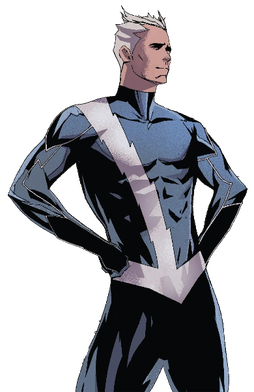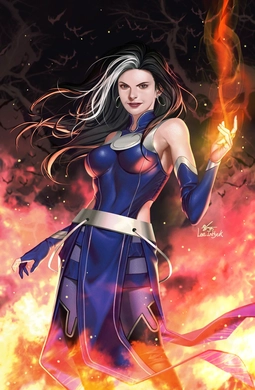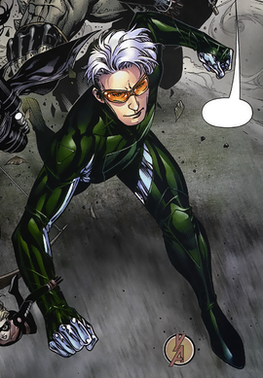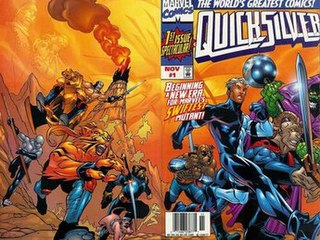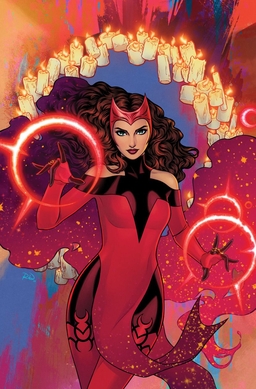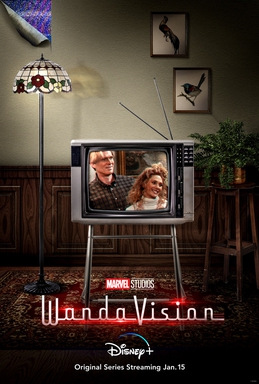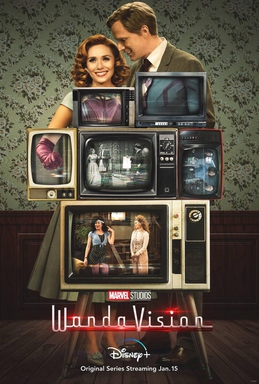| Year | Title | Country | Notes |
|---|
| 2021 | The Cursed | US | Set in late-19th century France, town leaders including the local baron organize the decimation of a Roma clan which dispute ownership of land within their sphere of influence. Before dying, the last of the Roma set a curse upon their families; terrifying events ensue. A pathologist investigates alleged animal attacks and missing children. |
| 2020 | The Secrets We Keep | US | Housewife Maja Reid (Noomi Rapace) is a Roma Holocaust survivor, who struggles with PTSD and survivor's guilt. Set in the late 1950s, Maja encounters a man named Thomas Steinman, whom she recognizes as a German soldier, who had raped her 15 years earlier, and been involved with the murder of Maja's sister. Maja kidnaps Thomas, intending to kill him, but find herself incapable of shooting him. With the help of her non-Roma husband, Maja keeps Thomas captive in their basement, while they investigate if Thomas really is the man who harmed her, and Maja attempts to learn the details of her sister's murder (only remembering fragments herself). Maja was originally going to be Jewish. However, the casting of Rapace, who might be of Roma heritage on her father's side, led to Maja being changed to Roma. [129] |
| 2019 | Gipsy Queen | Germany | Centers around a Roma immigrant, from Romania, who is an unmarried mother (which caused her to be disowned by her father) and supports herself, and her children, by working as a cleaner in Hamburg. Upon discovering a boxing ring, she starts to box again, having done it growing up. |
| 2019 | Doctor Sleep | US | The spirit Dick Hallorann implies that the film's antagonists, a cult of psychic vampires, began as a group of Roma. The film depicts the antagonists as nomads, who abducts and murders children. |
| 2018 | The Man Who Killed Don Quixote | UK | Óscar Jaenada portrays a mysterious Roma man, who keeps crossing paths with the film's main protagonist. The Roma man is a comedic figure, and a peddler, who steals a police car. |
| 2018 | Carmen & Lola | Spain | A love story of two Roma lesbians. |
| 2014-2019 | John Wick (franchise) | US | Dir. : Chad Stahelski. John Wick (aka Jardani Jovonovich), is a Belarusian Ruska Roma. |
| 2012 | The Dark Knight Rises | US | Roma villain – Bane. [34] |
| 2011 | Ghost Rider: Spirit of Vengeance | US | Danny Ketch is the son of Mephistopheles, and a Roma woman named Nadya Ketch. |
| 2011 | Sherlock Holmes: A Game of Shadows | US | The film's female lead, Madame Simza Heron (Noomi Rapace), is Roma. Simza is searching for her brother, who've come under the influence of Professor Moriarty. Simza joins forces with Sherlock Holmes and Dr. Watson, after they seek her out at a Roma camp in France. When first introduced, Simza is shown to be working as a fortune teller. When an assassin, sent by Moriarty (fearing that her brother's told her something about his plans), tries to kill her, Simza proves herself a skilled fighter and knife thrower. In a conversation with Holmes, Simza reveals herself to once having been a member of an anarchist group (as had her brother), but had left when it had become too radical for her and her brother. After Moriarty commits an act of terror in Paris, Simza spots members of the National Gendarmerie questioning members of the public. She becomes nervous, due to her (being Roma) not having papers. Simza's tribe allies itself with Holmes and Watson, helping them across borders and delivering Moritarty's notebook to Dr. Watson's wife. Together with Holmes and Watson, Simza sets out to prevent her brother from committing an assassination, that could cause spark a war between the nations of Europa. |
| 2010 | The Wolfman | US | A group of Roma are camped outside a town in the film and blamed by the townspeople for the death of the main character's brother. The main character visits a fortune teller among them named Maleva, played by Geraldine Chaplin, who informs him of his brother's curse. Later on the titular Wolfman rampages in their camp. |
| 2009 | Sherlock Holmes | US | Holmes and Watson comes across a Roma Fortune teller, named Flora (Bronagh Gallagher), while walking the streets of London. Flora starts to read Watson, having deep insight into Watson's personal life. Watson soon realizes that Holmes had arranged the whole thing (to discourage Watson's romantic relationship with his fiancée). |
| 2009 | Drag Me to Hell | US | Dir. : Sam Raimi. Horror. An ambitious bank worker incurs the wrath of an elderly Roma woman (Sylvia Ganush), played by Lorna Raver, who places an ancient curse on her. [130] |
| 2009 | Korkoro | France | A Roma family travels the roads of Vichy France during the Second World War. They learn that a new law forbids them from being nomadic. Depicts the rarely documented subject of Porajmos (the Romanies Holocaust). |
| 2008 | Khamsa | France | The main character, Marco/Khamsa is half-Roma, half-Algerian. Most of the main characters are his Roma relatives, who live together in a camp in the city. |
| 2008 | Filth and Wisdom | UK
Ukraine | Ukrainian Rom lives in London |
| 2008 | Stone of Destiny | UK | Scottish nationalists bury the Stone of Scone in a field. They return to find a Romanichal camp, and one barters with the Romany leader for the stone. |
| 2006 | Children of Men | UK
US | Features a Roma woman called Marichka in the refugee camp. At one point when she is trying to help the mother and baby escape, Marichka and the woman engage in a tug of war with the baby, recalling the stereotype of Roma stealing babies. Based on the P.D. James novel. |
| 2006 | Transylvania | France | Italian woman pursues a Roma violinist across Europe. |
| 2006 | The Indian and the Nurse | Czech Republic | Roma nurse and non-Rom in love. |
| 2005 | Fullmetal Alchemist the Movie: Conqueror of Shamballa | Japan | Roma character Noa is pursued by Nazis. |
| 2004 | Van Helsing | US | Kate Beckinsale plays Princess Anna Valerious, whose father is identified as having been "King of the Gypsies". Dracula is revealed to have been a son of Anna's direct ancestor. |
| 2003 | Japigia Gagi Roma Stories | Italy | Documentary by Giovanni Princigalli who lived one year in an illegal camp of Roms of Romania emigrated in Italy |
| 2003 | Holes | US | Roma friend. |
| 2002 | Swing | France
Japan | Max becomes friends with Swing, a Roma tomboy, who shows him nature and takes him to exuberant music evenings. |
| 2002 | The Hunchback of Notre Dame II | US | Sequel to the 1996 Disney animated adaptation, set some years after the first film. The Roma are depicted as having become an accepted part of Paris, since the first movie. The plot of the movie deals with a traveling circus of thieves coming to Paris. The nomadic lifestyle of the circus is briefly compared to the Roma. However, dialogue indicate that the people from the circus are not Roma. |
| 2001 | Hannibal | US | Corrupt Chief Inspector Rinaldo Pazzi hires a Roma pickpocket to acquire a fingerprint from Dr. Hannibal Lecter. The pickpocket manages to acquire it, but Dr. Lecter fatally stabs him. Pazzi lets the pickpocket bleed to death. |
| 2001 | Brotherhood of the Wolf | France | Set during the French Revolution, the film features a group of Roma bandits and a witch as antagonists. |
| 2001 | Gypsy Woman | UK | Starring Jack Davenport and Neve McIntosh. |
| 2000 | Chocolat | UK
France | Johnny Depp plays Rom love interest of mysterious chocolatier Vianne Rocher (Juliette Binoche). A flashback establishes that Vianne's mother (Chitza) was from Central America. Chitza is said to have been one of "the Wanderers". A people who moved with the north wind, from village to village, never settling down. Chitza had been taken to France by Vianne's French father (a good catholic, whom the seductive Chitza had made willing to "bend the rules of good Christian courtship"), but he awoke one morning to find both Chitza and Vianne gone, due to the nomadic nature of Chitza's people. Vianne continued this nomadic lifestyle with her own daughter. |
| 2000 | The Man Who Cried | UK
France | Johnny Depp portrays Rom in France. |
| 2000 | Geppetto | US | TV Remake. |
| 1998 | Train de Vie | France et al | A group of fleeing Jews meet up with a large group of Roma. |
| 1998 | Black Cat, White Cat | Serbia | Roma central characters. |
| 1998 | The Red Violin | Canada | The Roma takes the red violin across Europe from Vienna to Oxford over a century. |
| 1997 | Gadjo dilo | France | French lives with Romanies in Romania. |
| 1997 | The Hunchback | New Zealand | TV adaptation. |
| 1996 | Thinner | US | Man cursed by the Roma after killing one. Early in the film, a young Roma woman pulls up her skirt, in public, and shows the main character her underwear (along with offering a peak at her breasts). |
| 1996 | The Hunchback of Notre Dame | US | An animated adaptation by Burbank Animation Studios. Not to be confused with the Disney version, released the same year. |
| 1996 | The Hunchback of Notre Dame | US | An animated adaptation by Jetlag Productions. Not to be confused with the Disney version, released the same year. |
| 1996 | The Hunchback of Notre Dame | US | An animated adaptation by Golden Films. Not to be confused with the Disney version, released the same year. |
| 1996 | The Hunchback of Notre Dame | US | Animated Disney adaptation. Esmeralda is depicted as Roma by birth. Esmeralda ends up marrying Captain Phoebus. Quasimodo's mother is depicted as a Roma and a loving mother, who was killed by Judge Claude Frollo, when she and her husband attempted to enter Paris (which is established to be illegal for the Roma to do). Esmeralda was originally included in the Disney Princess franchise (a lineup of female protagonists who have appeared in various Disney franchises), but ended up being removed. She is one of out only two characters (the other being Tinker Bell) to be removed. |
| 1995 | Dracula: Dead and Loving It | US | Anne Bancroft portrays Madame Ouspenskaya, a parody of Maleva (Maria Ouspenskaya), the Roma woman in The Wolf Man and Frankenstein Meets the Wolf Man. |
| 1995 | Haunted | UK | Starring Aidan Quinn and Kate Beckinsale, an old Romanichal fortune reads the palms of two characters. |
| 1994 | Yrrol | Sweden | Sketch comedy, which jumps between different characters. Two of the characters are an apparently married couple, who are both blind. Their disability has somehow kept them both from discovering that he is a (racist) skinhead, and that she is Roma (wearing the blouse and skirt of Finnish Kale, though the film seemingly frames her as a generic Roma woman). |
| 1993 | Latcho Drom | France | The journey of the Roma told through musicians and dancers of India, Egypt, Turkey, Romania, Hungry, Slovakia, France and Spain. |
| 1992 | Bram Stoker's Dracula | US | Unchanged from the original text it was adapted from, Dracula's henchmen are Roma. |
| 1988 | Time of the Gypsies | Yugoslavia | Telekinetic Roma in realistic community at home, and in Italy. |
| 1988 | The Raggedy Rawney | UK | Starring Dexter Fletcher and Zoë Wanamaker, about a young soldier who falls in with a Roma camp. |
| 1986 | Tras el cristal | Spain | Dir.: Agustí Villaronga. |
| 1985 | The Black Cauldron | US | A Roma woman dances on a table for the enjoyment of the Horned King's men. |
| 1983 | Angelo My Love | US | All-Roma cast; dir.: Robert Duvall. |
| 1982 | Corre, gitano | Spain | Romanies from Granada and Seville. |
| 1982 | The Hunchback of Notre Dame | UK
US | TV adaptation. Lesley-Anne Down as Esmeralda. In the film, Frollo asks Esmeralda if she is Roma. She responds: "They tell me so, I don't know." Clopin forces Esmeralda to dance for the people of Paris as a distraction while the Roma pick their pockets. |
| 1979 | Tsygan | USSR | A Roma child was adopted by a Russian woman; after 17 years, a single elderly Roma man (Rom) appears in the village and gains the respect and love of the boy, disturbing the peace of the family (Цыган). |
| 1978 | King of the Gypsies | US | The Romani population of New York City comes into conflict with modernity when confronted with ancient traditions historically used to select a new king. Starring: Judd Hirsch, Eric Roberts, Susan Sarandon, and Brooke Shields. [131] |
| 1977 | Count Dracula | UK | As adapted from the original text, Dracula's henchmen are Roma. |
| 1977 | The Hunchback of Notre Dame | UK | TV adaptation. |
| 1976 | Rosy Dreams | Czechoslovakia | Roma and non-Roma lovers, societies. |
| 1975 | Tabor ukhodit v Nebo | USSR | Free-spirited Gypsy central characters; US title: Queen of the Gypsies. Loosely based on short stories ("Makar Chudra" and "Old Izergil") by Maxim Gorky. |
| 1970 | Count Dracula | Spain
Italy
Germany
UK | Unchanged from the original text it was adapted from, Dracula's henchmen are Roma. |
| 1969 | The Valley of Gwangi | US | A group of Roma try to dissuade the main characters from stealing prehistoric animals from the titular "Lost Valley" for their circus on the grounds that they will suffer a curse. Later, a Roma character frees the title character Gwangi from his cage. |
| 1967 | I Even Met Happy Gypsies | Yugoslavia | Realistic Roma central characters. |
| 1966 | Sky West and Crooked | UK | Inspired by the novel The Gypsy and the Gentleman by D. H. Lawrence. A young girl played by Hayley Mills finds happiness and friendship with a young English Romany played by Ian McShane. |
| 1963 | From Russia with Love | UK | James Bond in Roma camp in Turkey. Two Roma girls, both in love with the same man, fight each other either to the death (the fight is interrupted by an outside attack) or until one of them surrenders (with the loser being forever banished from the tribe). The local MI6 chief, Ali Kerim Bey (Pedro Armendáriz), identifies this act as "the Gypsy way". Bey notes that if both girls quit the fighting, the tribe's elders will decide which of the two gets to marry the man. However, the two girls are shown being unable to control themselves, when the non-violent option is given to them. After the attack, Bond asks the tribe's leader to end the girls fighting. The leader decide to leave it up to Bond, to resolve the dispute. The two girls are brought to Bond, who is told that they're both his. Bond is implied to sleep with both girls. |
| 1961 | Babes in Toyland | US | Barnaby's henchmen sells Tom (Tom Sands) to a Roma tribe (having heard that Roma people buy babies, and figure they might do the same for young Tom). Barnaby later hire the same tribe to provide entertainment for a wedding. The tribe performs a musical number, which romanticises Romani life. Among the tribe is Floretta, an old Roma fortune-teller, who reveals herself to be Tom in disguise. |
| 1958 | Touch of Evil | US | Roma fortune-teller. |
| 1956 | The Hunchback of Notre Dame | France
Italy | Sound adaptation. |
| 1955 | The Night of the Hunter | US | Drama. |
| 1951 | My Favourite Spy | US | Comedy. |
| 1950 | Gone to Earth | UK | Roma love interest. |
| 1949 | Singoalla | Sweden
France | The Roma are depicted as uncivilised thieves. The film features many Roma actors (including future civil rights leader and writer Katarina Taikon), who all regretted participating in a racist movie. [132] |
| 1949 | Black Magic | US
Italy | Roma character Balsamo in France. |
| 1949 | The Queen of Spades | UK | Russian Romanies. |
| 1948 | The Loves of Carmen | US | Rita Hayworth is Carmen. |
| 1948 | Secret Beyond the Door | US | Mexican Romanies. |
| 1947 | Folket i Simlångsdalen | Sweden | Based on Fredrik Ström's 1903 novel of the same name. Roma men (Roms) are depicted as drunkards and fighters, who are prone to pulling out knives. Roma women are depicted as seductive, and ready to jump into bed with anyone. |
| 1947 | Golden Earrings | US | Marlene Dietrich plays a Roma woman named Lydia. Lydia helps the film's protagonist get across Germany (during World War II) with her horse and wagon by dressing him up as a Roma man to hide him from the Nazis. |
| 1946 | Caravan | UK | An American marries a Spanish Roma in Spain. |
| 1944 | House of Frankenstein | US | Dr. Gustav Niemann (Boris Karloff) and the hunchbacked Daniel (J. Carrol Naish) comes across a Roma camp, where Daniel falls in love with the Roma dancing girl Ilonka (Elena Verdugo). Police officers drive away the Roma, accusing them of stealing in the nearby village of Vasaria. A Roma man whips Ilonka, after she refuses to give him the money that she's earned dancing, and threatens to tell the police that the stealing had been done by him. Ilonka is rescued by Daniel, who takes the unconscious Ilonka with them. Ilonka does not return Daniel's feelings, and falls in love with Larry Talbot (Lon Chaney Jr.). After learning that Larry is a werewolf, Ilonka still loves him. Seeing Larry's suffering, and knowing that the Wolf Man is killing people, a heartbroken Ilonka forges a silver bullet (knowing that the bullet needs to be fired by someone who loves and understands the cursed person). She aims a gun at Larry, but cannot bring herself to kill the man that she loves. Moments later, Larry transforms into the Wolf Man, and mortally wounds Ilonka. During the attack, Ilonka shoots the Wolf Man, killing him. With the last of her strength, Ilonka crawls over to Larry and dies embracing him. Her death turns Daniel against Dr. Niemann, declaring Ilonka as having been the only thing that he ever loved. The film was written by Edward T. Lowe, who had also written the screenplay for the 1923 film version of The Hunchback of Notre Dame . |
| 1944 | Cry of the Werewolf | US | Roma werewolves. |
| 1944 | Gypsy Wildcat | US | Roma love interest. |
| 1943 | I Mörkaste Småland | Sweden | Potentially one of the most racist movies ever made in Sweden. A group of Roma moves into an empty cabin, against the wishes of the cabin's owner. The Roma are shown to steal, and do minor work for the local farmers (who fears what might happen, if they refuse the Roma). In the end, the farmers have had enough, and throw out the Roma (and their stolen goods). The film presents it as justice having been done. [133] |
| 1943 | For Whom the Bell Tolls | US | Roma character Rafael in Spain. |
| 1943 | Frankenstein Meets the Wolf Man | US | After Larry Talbot is brought back to life, he seeks out Roma fortune-teller Maleva. Maleva takes pity on him, promising to take care of him and treat him like if he was her own son. Maleva travels with Larry to the villager of Vasaria, in hope of finding Dr. Frankenstein, who might be able to cure Larry. Larry turns into the Wolf Man and kills a girl. Angry villagers corners Maleva, who is arrested, but later released to help Baroness Elsa Frankenstein and Dr. Frank Mannering finding both Larry and The Frankenstein Monster. |
| 1941 | The Wolf Man | US | Roma fortune-teller. The film's main character becomes a werewolf, after being bitten by a werewolf (who was Roma). |
| 1940 | Pinocchio | US | Roma villain – Stromboli (identified as Roma by "Honest" John Worthington Foulfellow). |
| 1939 | The Hunchback of Notre Dame | US | Esmeralda (Maureen O'Hara) is depicted as being Roma by birth. Early in the film, a group of Roma (among them is Esmeralda) attempt to enter Paris, but is kept out by soldiers for being foreigners (only Esmeralda is able to sneak past the guards). A Roma man kindly tells a French soldier: "Foreigners? You [the French] came yesterday, we come today". Frollo is depicted as the Chief Justice of Paris, who persecutes Esmeralda on the basis of her race. He insists that she comes from an evil race, who engages in witchcraft and magic. Esmeralda protests that Frollo knows nothing about her people, and questions him if they really had the power of magic, would they choose to be outcasts (always poor and persecuted)? In the same scene, King Louis XI tells Esmeralda that people tell him that the Roma are a lot of thieves. Esmeralda tells him that it is not true, and that they only steal whenever they are hungry. Screenwriter Sonya Levien made the story relevant to the time that the film was made, with the persecution in the film being a parallel to what was going on in Germany prior to World War II. [134] |
| 1937 | Heidi | US | In an effort to get rid of Heidi (Shirley Temple), Fräulein Rottenmeier tries to sell the girl to some Roma, but the girl manages to escape before they can take her away. |
| 1936 | Professional Soldier | US | Rita Hayworth (then Rita Cansino) portrays a Roma Dancer. |
| 1936 | The Bohemian Girl | US | Comedy with Laurel and Hardy as a pair of misfit Roma men (Roms). The Roma are shown pickpocketing and fortune telling. An evil count persecutes the Roma, which (combined with her lover being lashed) causes Hardy's wife to kidnap the count's daughter, whom she fools Hardy (who believes anything that his wife tells him) into believing to be their daughter. After his wife elopes with her lover, Hardy raises the girl together with Laurel. Despite the stereotypes in the film, it ended up being banned in Nazi Germany for having a positive depiction of Roma. [135] |
| 1935 | The Bride of Frankenstein | US | A Roma family (father, mother, daughter, and grandmother) is shown having set up camp in the woods, and are sitting around their camp fire. Fearful of the Monster (who has harmed and killed numerous people, including two young girls), the mother is protective of her daughter, Aurora, and insists that the girl stays close to her. The mother thinks that they should leave this place, but the father assures her that there is nothing to worry about, as the Monster's locked up in prison. Moments later, the Monster arrives at the camp. The three Roma women flee the camp in horror, while the father tries in vain to fend off the Monster. |
| 1934 | The Little Minister | US | The heroine poses as a roma. |
| 1927 | The Unknown | US | Roma love interest. |
| 1923 | The Spanish Dancer | US | Pola Negri stars as Maritana, a Roma fortune teller. |
| 1923 | The Hunchback of Notre Dame | US | Roma woman Esmeralda helps the Hunchback. A flashback shows the infant Esmeralda being kidnapped by two Roma women. She is established as later having been bought from them by Clopin. |
| 1918 | Set Free | US | Comedy about a wealthy young woman, named Roma Wycliffe (Edith Roberts), who learns that her late grandmother was Roma. She dresses up in stereotypical clothing, and sets out to live out the freedom of Roma life. |
| 1918 | Carmen | Germany | Pola Negri is Carmen. In 1921, the film was released in the United States under the title "Gypsy Blood". [136] |
| 1917 | The Darling of Paris | US | Adaptation of The Hunchback of Notre-Dame . In this version, Esmeralda is depicted as a wealthy girl whom Romanies kidnapped at birth. The film ends with Esmeralda having been reunited with her wealthy family. |
| 1916 | The Vagabond | US | Edna Purviance plays a young woman, who had been abducted by a Roma tribe when she was a young girl. The tribe uses her as a servant, with the Chieftain whipping her mercilessly. The Tramp (Charlie Chaplin), a beggar, rescues her. During their escape, Chieftain attempts to drown the Tramp. Chaplin was himself of Roma heritage, which might have influenced the creation of the Tramp. [137] |
| 1915 | Carmen | US | Geraldine Farrar is Carmen. |
| 1913 | The Gypsy Queen | US | Comedy short. |
| 1913 | The Student of Prague | German Empire | Roma love interest. |
| 1911 | The Spanish Gypsy | US | Short film directed by D. W. Griffith. |
| 1908 | The Adventures of Dollie | US | A Roma man attempts to rob a woman, but is stopped by the woman's husband. The Roma man later returns and kidnaps their little daughter, Dollie. Dollie is put in a wooden barrel. When the Roma attempts to escape in their wagon across a river, the barrel ends up in the water and is swept downstream in dangerous currents. The film was the directoral debut of D. W. Griffith. |
| 1905 | Rescued by Rover | UK | Roma villain: a beggar woman, who steals a baby. [138] The film was among the biggest international hits of the era. [139] |
| 1905 | Esmeralda | France | The oldest adaptation of The Hunchback of Notre-Dame . |

